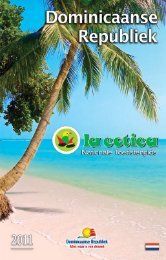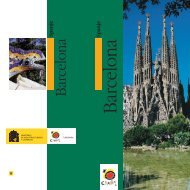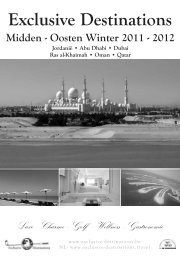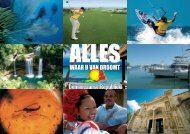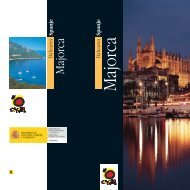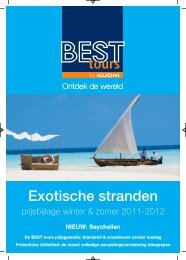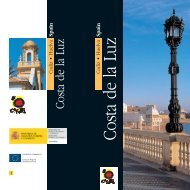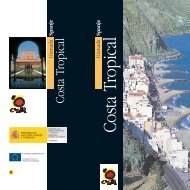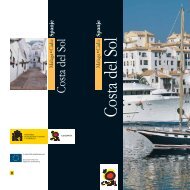Create successful ePaper yourself
Turn your PDF publications into a flip-book with our unique Google optimized e-Paper software.
THE MOUNTAINSCantabriaPalace and Magdalena Beach in SantanderTraditionally, two large natural areas have been differentiated: «theSeacoast» and «the Mountain». The rocky coast, softened by long gentlebeaches, has a mild climate, and a high population density. TheMountain, on the other hand, is a region with abrupt terrain, a moreextreme climate, low population density, and is basically rural.The most beautiful towns are clustered in two valleys: Liébana valleywith Potes and Mogrovejo, and Cabuérniga valley, where we findCarmona, Bárcena Mayor and Renedo.THE SEACOASTThe coastal fringe of Cantabria embraces along 110 kilometers from Eastto West the historical and tourist towns of Castro Urdiales (city),Laredo, Santoña, Noja, Isla and Ajo. In the center, we find Santander,the capital with its lovely beaches and splendid bay. On the easterncoast, Suances, Comillas and San Vicente de la Barquera are ofinterest with Santillana del Mar, a national monument, further inland,and the world famous Altamira caves. Torrelavega, on the routeSantander-Oviedo is the nerve center for communications in the area, inaddition to being the second most important city in the region, a cattleraisingcenter and a primary industrial center, and Cabezón de la Sal,between the coastal area and the interior, portico of the Cabuérnigavalley and of the vast National Hunting Reserve of Saja and thenature parks.Cantabria was traditionally referred to as «the Mountains». More thanhalf of its territory is over 700 meters/2,300 feet above sea level. Of theten natural regions, nine of them are mountainous, with seven parallelvalleys that lead to the sea, and another two transitional areas leading tothe Castilian plain.Bordering Asturias is the Liébana Valley and its capital, Potes. On themountain peaks, we can find the golden eagle, an abundance of chamois,along with the wolf. Next is the Nansa Valley, with the largestextensions of oaks and beech trees in all Cantabria. We then come to theSaja river, which gives its name to the largest National Hunting Reservein <strong>Spain</strong>, abounding in deer, roe deer, boar, fox, as well as an importantcolony of tawny vulture. The center of this immense reserve is theCabuérniga Valley, transversed by the Saja and Argoza rivers. Thelatter bathes the quaint town of Bárcena Mayor, an authenticstorybook village with its traditional architecture still untouched. Othercharming villages are Carmona and Renedo. The legendary Route ofthe Foramontanos passed by here, taken by the Cantabrians who wentdown in the 10th century to repopulate the Castilian plains. A curioustheory alleges that this area near Peñasagra was the Earthly Paradiseand that the first Biblical stories took place here. Easiest access to theSaja Valley is from Cabezón de la Sal, following the course of theriver. Afterwards comes Besaya Valley, replanted with eucalyptus trees,and the Pas Valley. When one speaks of the Pas Valley, «los pasiegos»come to mind, an ethnic group that migrated seasonally, different in theirway of life from the rest of the inhabitants. The two remaining valleysare Miera, the narrowest of all, where we find the Health Spas ofLiérganes, and Asón, also famous for its salmon and trout-filled river.The two regions facing the Castilian plain are Comarca Sur andCampoo, with the Ebro reservoir, an important stopover for a multitudeof migratory birds. Here, near Reinosa, the river Ebro originates andsupposedly gave its name to the Iberian Peninsula. In the mountains, wefind the ski resort of the Alto Campoo.Bárcena Mayor30



